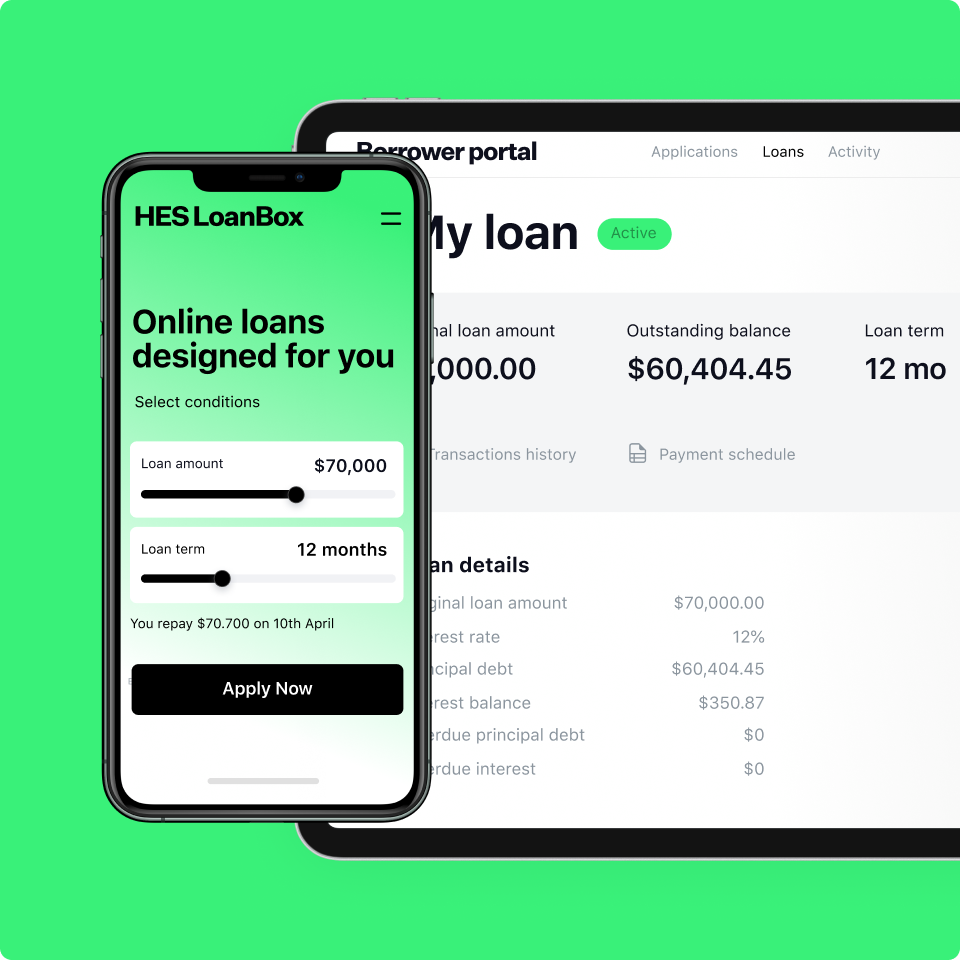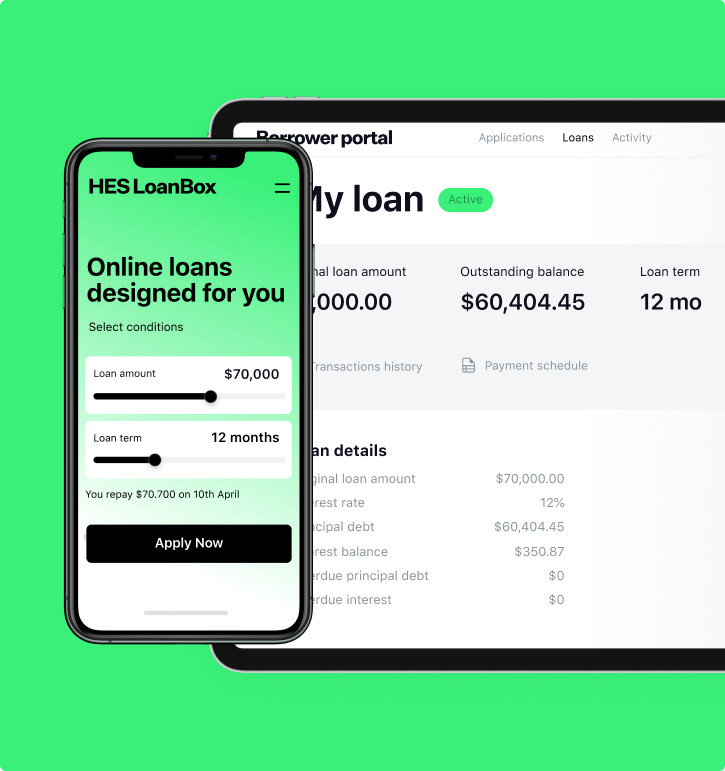Almost every company can become a fintech company in the next ten years. A bold claim that may leave you wondering how this could be possible and why businesses outside the financial sphere would consider onboard fintech tools? The answer—embedded lending.
Embedded finance is accelerating. According to a 2022 study by Bain & Company, financial services integrated into e-commerce and other software platforms represented nearly 5% of all US financial transactions in 2021, amounting to $2.6 trillion. The same research indicates that this figure will grow significantly, exceeding $7 trillion by 2026.
More and more businesses are digital onboarding lending tools, from Point-of-Service software to Buy Now, Pay Later (BNPL) services to customize fintech lending solutions. These strategies help to deliver a one-stop-shop service for consumers to get credit at the point of purchase leading to increased satisfaction among other factors.
But is it all as straightforward as it seems? Like all technology, there are some nuances you will need to consider. So, let’s take a look at the pros and cons of embedded lending.
Types of Embedded Finance
Above we looked at some of the most well-known names in embedded finance, but what types are there and, more importantly, which is right for your business?
- Point-of-Service (POS) lending—used for larger purchases. POS lending allows customers to access a wider line of credit. Note. Usually, this also involves checking creditworthiness.
- BNPL—short-term buy now pay later management software allows consumers to get products now and pay for them in monthly installments. This service is performed at checkout and can be as quick and easy as giving a few basic details.
- Investments and trading—traditionally, such services are run on specialist platforms that allow a user to invest or trade using in-app/in-platform tools. The system may also offer leverage to increase spending and interest, which in turn enable the user to trade more. Unfortunately, this often involves increased risk too.
- Fintech-as-a-service—includes a range of fintech software-as-a-service tools that can help your business grow or if you are a consumer, seek an appropriate line of credit that works for your needs. Fintech software solutions seeks to customize finance features so every tool will be unique.
Read also
Pros of Embedded Lending
For both end-consumers and businesses, there are lots of benefits of using embedded finance. Let’s take a look at some of them.
Funds local communities
Having access to the right financial tools is a must in modern society. It allows people to access the services they need and purchase products that they may not be able to afford in one lump sum. By offering bi-weekly, monthly, or other payment schemes, such micro-loans offer an important line of credit that encourages economic growth. This is especially vital for clients who perhaps have larger credit, such as a mortgage, and are unable to get a loan another way, even if it is financially viable for them. According to the Trending in Lending report, 39.37% are able to finance their purchases this way.
Expands revenue streams
However, the benefits of lending don’t just end with the potential for consumers. A 2020 report by Mambu found that 88% of banks believe that embedding financial services into third-party platforms is important for their future success. Small and medium-sized businesses can also benefit from the introduction of embedded financial systems. For example, they may be able to offer higher-end products or competitive rate payment plans for high-ticket items or services.
Increases consumer loyalty
Customers love the flexibility, and embedded finance offers that in abundance. A survey conducted by Cornerstone Advisors found that 69% of US consumers are interested in using embedded lending products from their existing financial institutions, such as loans offered during the checkout process. By feeling more in control, they are more likely to purchase in the first place.
Reduces churn rates
Due to the ties of having credit, consumers are likely to feel more connected to a business. In a survey conducted by FICO, 61% of US consumers said they would be more likely to use a financial product offered by a non-financial company, such as a retailer or fintech company, if it was embedded in the company’s app or website. This may encourage them to go back time and time again whether to pay the loan or to purchase a new product. With a straightforward process, consumers feel more comfortable repeating the purchase procedure.
Simplifies the process for both the client and business
For businesses, this is a whole new service offering that allows you to directly connect your client with credit, whether in-house or through an intermediary. All this happens in-store or via your e-commerce site so that your consumers never leave to make a purchase.
Can lower risk
Depending on the type of embedded finance your business is thinking of implementing, you may be able to reduce the risk of default. This is particularly the case for companies planning to offer embedded finance through third-party platforms or banks. In which case, the third party will handle all the transactions and the risk associated with them. Note: this may not always be the case. Please pay careful attention to the type of service offered.
Cons of Embedded Lending
While there are a lot of benefits to such interactive financial tools, there are some downsides too. Here we’ll explore some of the cons of embedded finance and why it might not be the best solution for you.
Risk of taking on too many loans
With the increasing availability of credit, consumers may find themselves drawn to take out more, smaller loans. Over time the payments for these can build up, especially if the consumer has more than one. In which case, they may find themselves in more debt than they bargained for and default on payments. Even today, a simple Google search shows that borrowers are concerned that embedded finance will impact their overall credit score and as availability to embedded finance grows, the industry will also have to tackle the issue of related debt defaulting.
Debt by default world
Critics of embedded finance are concerned that the increased flexibility offered by embedded finance could be a bad thing. As consumers are encouraged to “buy now, pay later,” they may be more likely to get into debt. In turn, this creates a culture of “debt by default” where taking everything on a buy now, pay later scheme becomes the norm and goes beyond the challenges of individual debt. Think of a Netflix culture for lending.
The consumer is only connected to the retailer
While the loan may be issued by the lending provider (a bank or other financial organization), the only contact the client has been with the company. This may prove a challenge in cases over a payment dispute or other issue. At the same time, a retail employee is not a lending advisor and may require additional training before encouraging consumers to issue loans.
The Hybrid Model: Could This be the Evolution of Embedded Lending?
As retailers continue to adopt embedded financial tools, where does that leave banks? And, indeed, should retail firms train their staff in finance? It’s true that over the last decade, the traditional roles filled by these bodies have changed significantly.
For retailers, this may mean ensuring their employees are educated in the financial products they offer and their implications in the long and short term. In some cases, this might also mean holding the required competency to ensure creditworthiness when needed.
Banks, too, are changing. Adapting their role to fit the new world, banking providers may experience structural changes in how their product work. For example, this may mean delivering increased support to consumer businesses seeking to onboard embedded financial tools or ensuring the loans they issue are sustainable.
What’re the Next Steps if You’re Thinking of Embedded Financial Solutions?
Seamlessly embedded financial tools are no longer a nice-to-have for businesses. They are a must for any company seeking to grow and thrive. So, what can a business do to access these services effectively? Here are five steps to get started.
1. Ask—is your business agile? Often embedded lending solutions require time and energy to get right, but at the same time, require a fast solution that is ready-to-market as soon as possible. Taking an agile approach is the only logical path to ensuring success and adapting to any changes. In doing so, you can adjust your lending solution to market demand without compromising the overall business strategy.
2. Make a strategic plan. Speaking of strategy, while you do need to be able to adapt, it’s also vital that you approach embedded lending strategically. Create a carefully detailed plan which includes all necessary risks and a detailed plan for how and why your solution will work. For example, you may take account of client default risks and who will be responsible—business or credit provider—and how your lending solution will tangibly impact the customer journey in a positive way.
3. Check the legal structure in your region. Embedded finances are a growing trend all over the world. However, different regions approach the term differently. Ensure the service you are planning to offer is legal and, in addition, look for providers who are already familiar with the legal landscape assist. For embedded lending in particular, you may face specific challenges restricting who is able to offer credit or specific terms and conditions. This is especially vital to explore if you are a multinational company. Specially, it’s essential to look into laws around e-signatures, AI usage laws, data protection, KYC, AML, and more.
4. Get the right tools. Having the right software is half the battle. When creating your embedded lending solution, you’ll need to make sure it fits your business needs. Explore the options on the market, make a list and then start talking to the companies offering these services. Look for one that is knowledgeable and has experience in creating such tools beforehand and knows the ins and outs of not only how the software performs but the legal structures too—ensuring you get a comprehensive solution that works for your needs.
5. Analyze and improve. Just like any project, it’s essential not to treat embedded finance as a one-off event or project. Often, even with the best-built solutions, it’s possible to analyze and improve the offering in the long term. Doing so will not only improve efficiency but also can cut financial costs and lower the risk for the future. Additionally, as the embedded lending industry evolves, it’s likely we’ll see more clarity and consensus on product usage, regulatory issues, and best practises.
Read also
Can I Use HES Technology for my Embedded Lending Solution?
HES offers end-to-end loan management software solutions, so when it comes to embedded lending, we know the process from the inside out. Whether you need a tool to onboard your clients in loan origination, process payments, deal with default, monitor loans, or something else entirely, we’re on hand to guide you through the process.
With an average time-to-market of 3-4 months, you can get a customized lending solution that meets your needs with no vendor lock-in and a whole lot of freedom to ensure your customers are satisfied.























